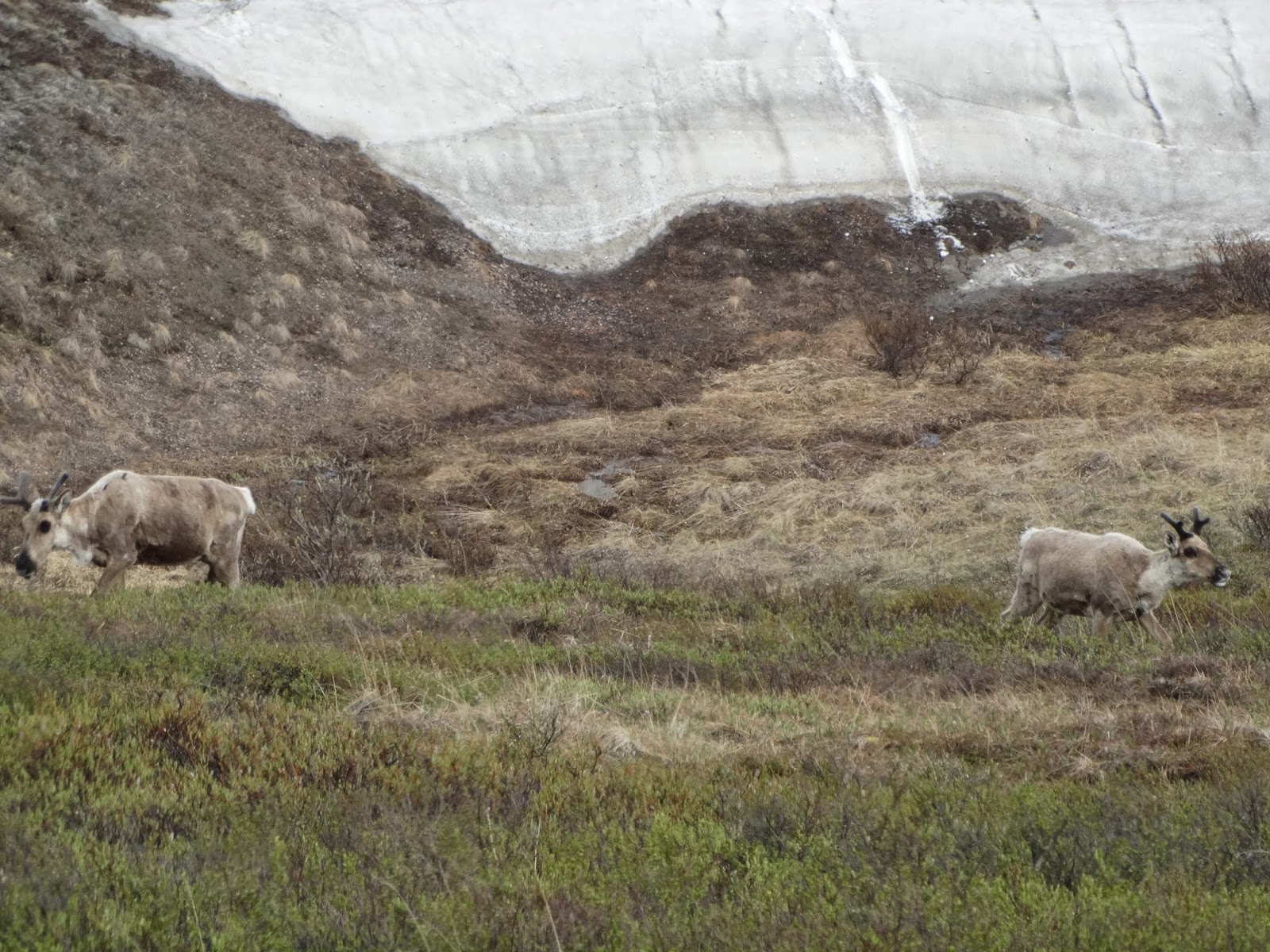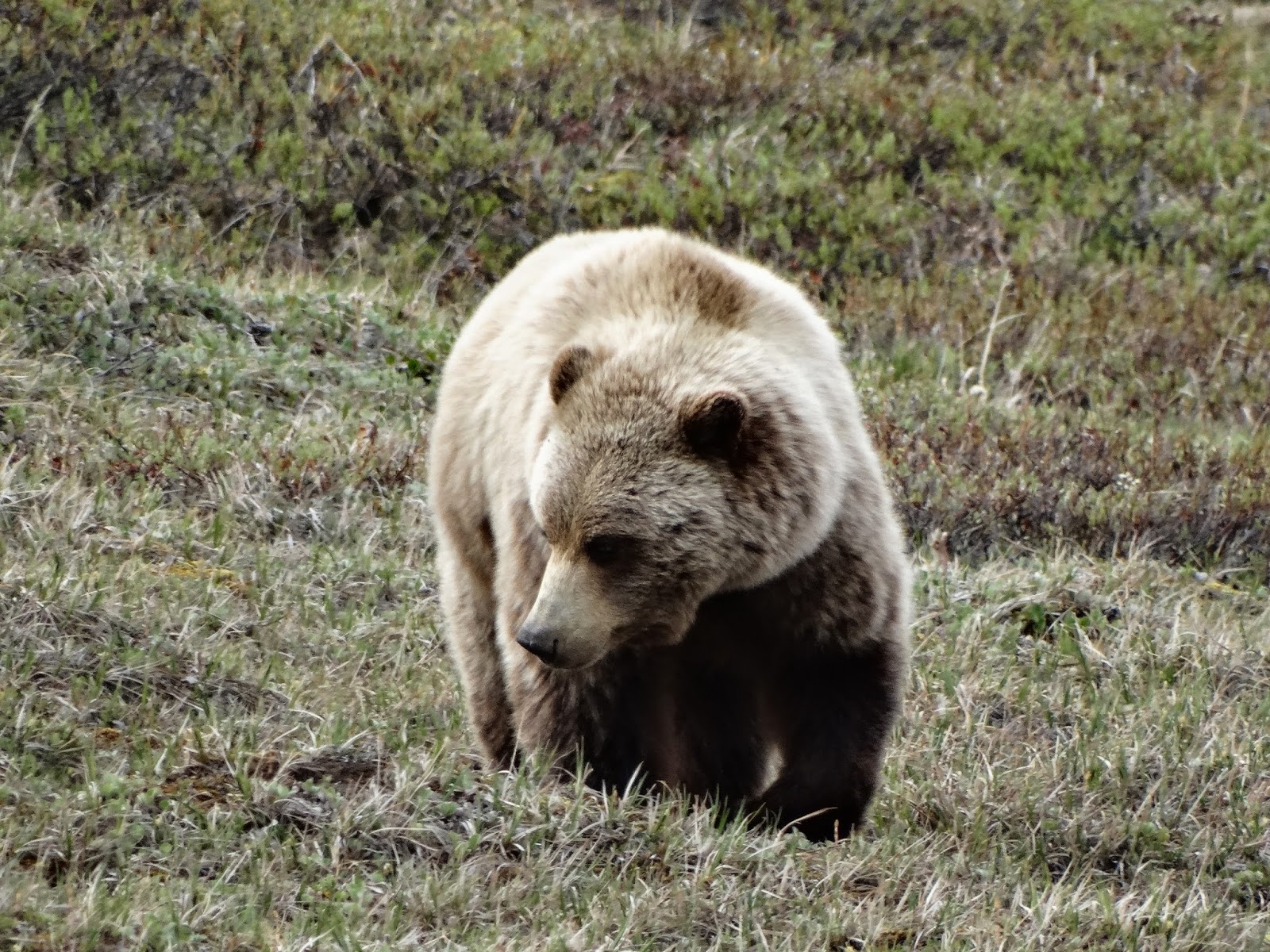 |
| "Wildflowers bloom during the short growing season." |
 |
| We left the bus and we able to take pictures and get a panoramic view of our surroundings. |
 |
| "Like the taiga, the tundra must contend with a short growing season. It is even more exposed to abrasive, blasting winds and plants must root thinner and rockier soil." |
 |
| "A silt-laden stream flows and shifts, carving out a wide riverbed. A caribou sniffs, paws the ground, and hurries along its way." |
 |
| "A winter wind blows across a ridge, exposing plants and lichens that hungry caribou relish." |
 |
| "The three make an enchanted braid: water, wind, and caribou, all colored by a northern restlessness." |
 |
| "Caribou calves can walk one hour after birth, and sprint with their herd just a day or two later." |
 |
| "Even when they are not actively migrating, caribou travel vast distances to browse and keep ahead of the biting flies that plague them." |
 |
| "Occasionally, they'll seek rest and refuge atop a breezy ridge or in a cool snowfield." |
 |
| "Herbivores of all kinds spend the summer ceaselessly grazing." |
 |
| That's the end of caribou for now. :) |
 |
| Oops, not quite. |
 |
| We were happy to see another bear. |
 |
| Away he went, perhaps looking for his girlfriend. :) |
 |
| "A male caribou will grow to be between 350 and 400 pounds, the female, 175 to 225 pounds. Maximum height is 3.5 to 4 feet at shoulders. Caribou live 11 to 12 years." |
 |
| "Ma"Males and females grow antlers, with male antlers significantly larger--they may reach 25 pounds or more on big bulls." |
 |
| "Caribou mate in October at 3 years; gestation period is 8 months; one calf born May -June; calves weight 10 to 15 pounds." |
 |
| "Caribou eat willow, dwarf birch and grasses in summer. Their food in winter is lichens, moss and dried sedges." |
 |
| "Caribou seek refuge from bugs on snowfields. They graze for lichens and other plants with their heads low to the ground." |
 |
| Debbie is wearing the headband she bought earlier that day. It's made of the fur of huskies. Cute!! I love it. |
 |
| The final photos on our wilderness tour were of a raven. |
 |
| "Common ravens have been a part of human civilization for centuries. They seem to enjoy the distant company of people and will follow hikers." |





































3 comments:
Shaddy you just keep RAMPING-UP your posts !! You noted the 'short growing season' .. it is short BUT IT IS INTENSE !! The first Caribou photo I thought was from an informational brochure. Then the Caribou photos just kept coming on and on and on and it dawned on me that you had a Caribou 'encounter'. I have NEVER had such a viewing. In 1992 up near Deadhorse I did see several Caribou herds of .. IF not a thousand .. at least hundreds of them moving south for the winter. It was an awesome sight.
The 'beige' grizzly looks so famliar. They must have a name for him. Poor ground squirrels.
I had to chuckle about the rain and the fog. THIS is usual up here. The sun just darts in and out as it pleases. Then again .. we do get some stretches of brilliant weather. About 40 days in a summer.
Hark the Raven Evermore. LOVING the visit you enjoyed up here. Debbie and a Musky Hair Hat? I have never heard of such a thing. I will go back and re-read that.
Smiles and Joy from Cap and from Patti ..
CAP & PATTI: Husky fur headband, not musky hair. TeeHee.
Wonderful pictures and thanks for sharing. You can also enjoy Northern Lights Adventure.
Post a Comment